Tutorial: How to build a stadium in 4 steps
source: StadiumDB.com; author: Miguel Ciołczyk Garcia
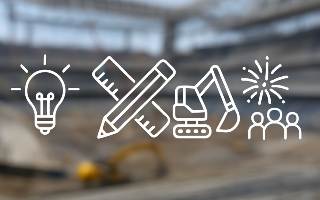 From the idea and auction announcement to the inauguration ceremony. Here is how to build a modern stadium: multi-purpose or strictly for football, for a club or a city, in the centre or on the outskirts. But remember: you build at your own risk
From the idea and auction announcement to the inauguration ceremony. Here is how to build a modern stadium: multi-purpose or strictly for football, for a club or a city, in the centre or on the outskirts. But remember: you build at your own risk
Advertisement
Phase 1: What, how and where
A new club in town, the ageing of the current facility or an election campaign. Every pretext is good for building a new stadium in the area, and even more obstacles can arise in the process. But before there is any trouble at all, one thing is needed: an idea.
| The idea | Stadium type and destination |
|---|---|
| Estimated capacity | |
| Requirements: national/FIFA/UEFA/World Athletics | |
| Market analysis | Market demand |
| Commercialisation opportunities | |
| Evaluation of expected income | |
| Localization | Selection of potential sites |
| Purchase or lease of land |
The idea
The types of stadiums can vary, even within the same model. A typical football venue may have the possibility to extend the pitch for American football; an athletic facility may have both a running track and a pitch as well as, for example, an olympic pool inside; while by the term multifunctional
we may mean one suitable for multiple sports or a venue that apart from football games organizes concerts, conferences or other cultural and business events.
It is easier to define the capacity. A modest city stadium may have a few hundred seats, a club with a larger audience will need a few thousand of them, and for the country's top teams or larger cities the number of seats can go into the tens of thousands. The largest stadium in the world can host 114,000 fans and is located... in North Korea.
Standards will be crucial. They depend on the purpose of the stadium and, in part, on the number of seats in the stands. League, federation, UEFA, FIFA, World Athletics… each body has its own requirements. From the dimensions of the pitch, the number of seats in the visitors' sector and the dimensions of the changing rooms to the lighting parameters - everything is precisely regulated. So we have to decide which standards we aspire to meet before we even start planning the stadium.
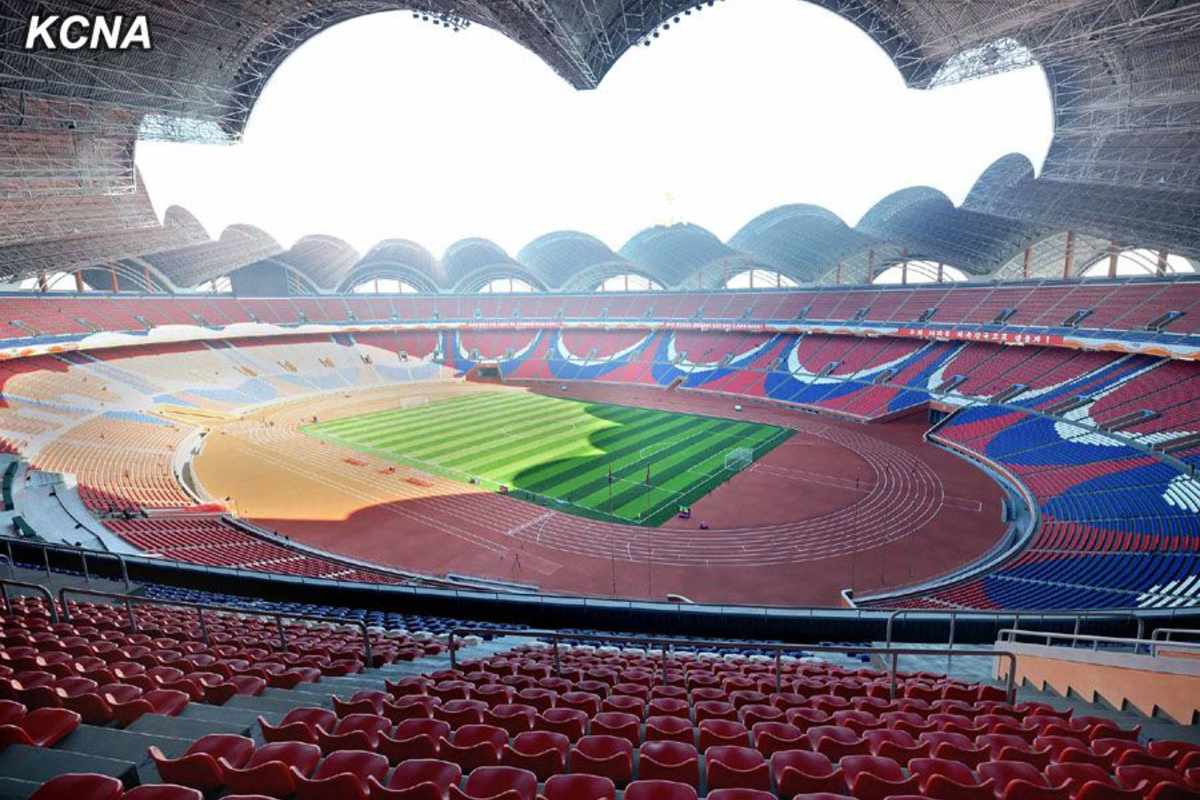 © KCNA | Rungrado May Day Stadium will hold the title of world's largest stadium until 2028, when the 115,000-seat Grand Stade Hassan II in Morocco will be inaugurated.
© KCNA | Rungrado May Day Stadium will hold the title of world's largest stadium until 2028, when the 115,000-seat Grand Stade Hassan II in Morocco will be inaugurated.
Market analysis
After, or even while, the vision is being refined, a comprehensive market analysis should be carried out in order to confront our ambitious plans with reality. A stadium in a location where there is a demand for a modern sports facility may prove to be a profitable venture, while a facility that is used once a month will drain the owner's wallet and may prove to be a financial trap.
This can be prevented by a well-prepared commercialisation plan for the facility. It will influence the design and assessment of projected revenues, which can have a major impact on the construction budget. Concerts, the club's museum, shops or even restaurants can turn the stadium into a modern commercial centre, allowing to balance the costs that will, after all, pay for itself within a few years.
Location
Once the vision has been defined and adjusted for market realities, a key moment comes: choosing a location. Several potential sites must be selected and the compatibility of our intentions with the local zoning must be examined. An extremely important factor is the level of connectivity of the site. A stadium in the city centre may rely on the public transport network, but a site on the outskirts will need to provide a large number of parking spaces. It is also necessary to bear in mind the attitude of local residents towards the investment. As numerous examples show, organised resistance from neighbours can paralyse many projects.
Once the selected options have been explored and negotiated, the rights to the site must be acquired. This can be done by way of lease or purchase. Depending on whether the owner is public or private, the procedures will vary considerably.
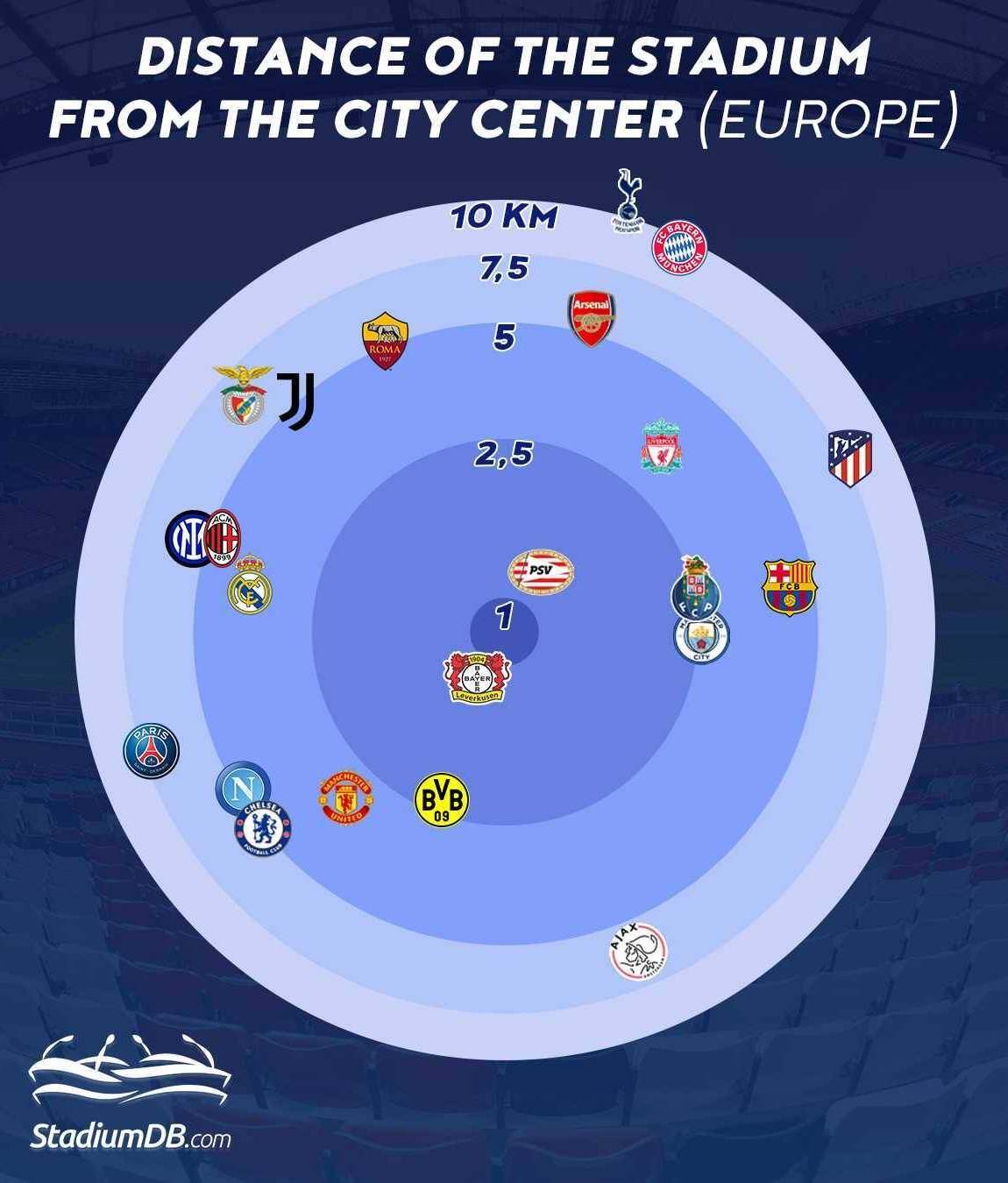 Many European clubs are moving out of dense city centres. However, these distances are not as great as in the United States.
Many European clubs are moving out of dense city centres. However, these distances are not as great as in the United States.
Phase 2: Money, Design and Permits
Once the initial planning and construction decision phase is over, it is necessary to move on to the specifics. A project, money and administrative permits are needed to build the stadium.
| Financing | Financing plan: private/ public/ public and private |
|---|---|
| Budget | |
| Acquisition of loans / public funding / crowdfunding | |
| Project | Start of the design contest |
| Project choice | |
| Development of the final project | |
| Administrative procedures |
Decision on land development conditions |
| Project evaluation | |
| Obtaining construction permission | |
| Selection of the main contractor |
Funding
Even before choosing a location, it is important to start thinking about financing the investment. This can be public, private or public-private. Interesting and worthy options to consider are crowdfunding or forming a company and selling shares of the stadium to raise funds to start construction. It is also worth considering selling the naming rights to the venue already at this stage.
Determining the financing will help to calculate the budget. Once we know the cost of building our stadium, we can approach the relevant institutions, such as funds or banks, to obtain a loan.
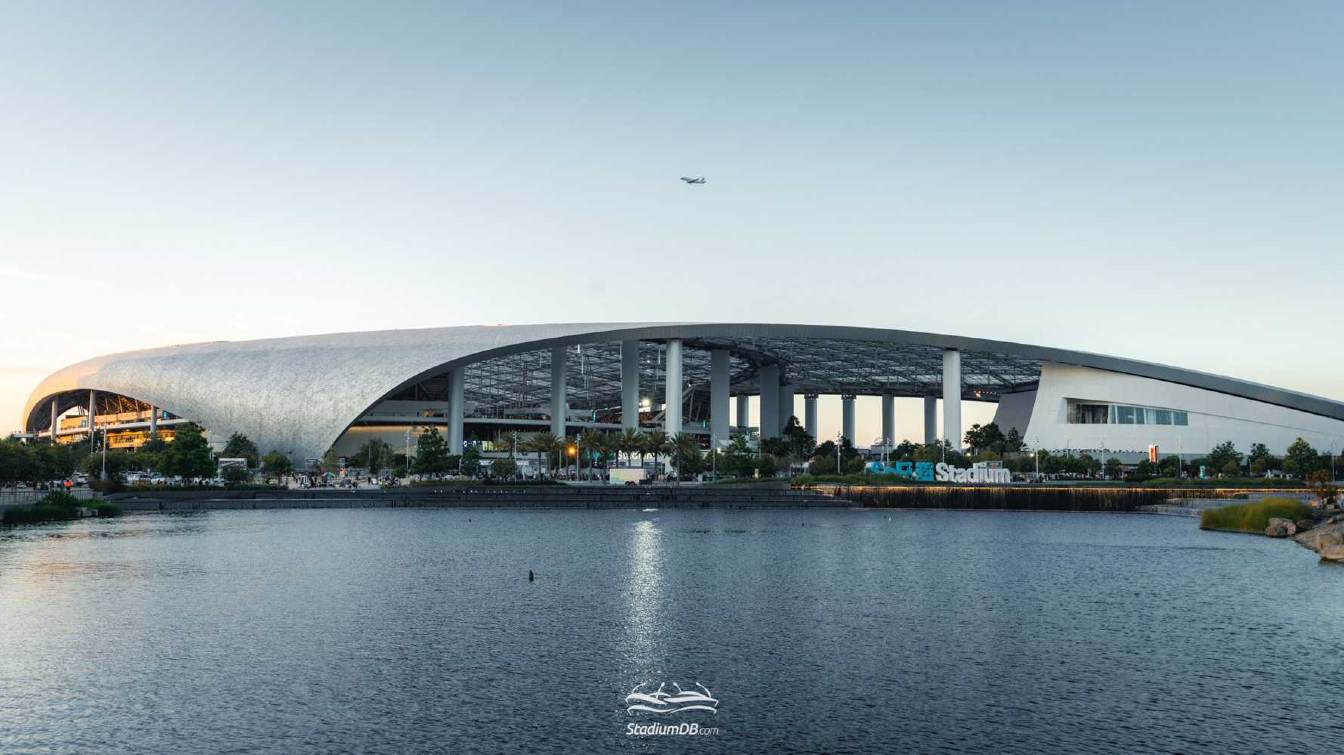 © Grzegorz Kaliciak | The most expensive stadium in the world is the American SoFi Stadium. Its construction cost $3.4 billion in 2020.
© Grzegorz Kaliciak | The most expensive stadium in the world is the American SoFi Stadium. Its construction cost $3.4 billion in 2020.
Project
Once the budget has been determined, a design competition can be announced. This route allows for a number of preliminary designs to be received, from which, however, only one - the best - will be selected. After we announce the winner, it will take several more months before the architects prepare a detailed final design.
During this time, care must also be taken to dialogue with local residents and possibly amend the plans to take their concerns into account. After all, protests by environmentalists or residents can effectively block the construction or operation of a stadium. This has been painfully experienced by Real Madrid, which cannot hold concerts at the new Santiago Bernabéu because exceeding sound standards has led to massive protests from neighbours and the subsequent cancellation of many events.
Administrative procedures
In many countries, raising funds and preparing a project is nothing compared to obtaining permits. Administrative procedures can be a real ordeal. Zoning compliance assessment, environmental assessment, consultation period, schedule, obtaining planning permission....
However, a big facilitator will be the support from local authorities for the initiative or even their economic involvement. In some countries, projects can qualify as a public interest initiative,
which speeds up proceedings.
Once we have all the design, money and any permits, we move on to selecting the contractor. This, too, can be done on a competitive basis to drive down costs as much as possible and select the best bid. However, it is worth choosing a company with experience and reputation to avoid unpleasant surprises.
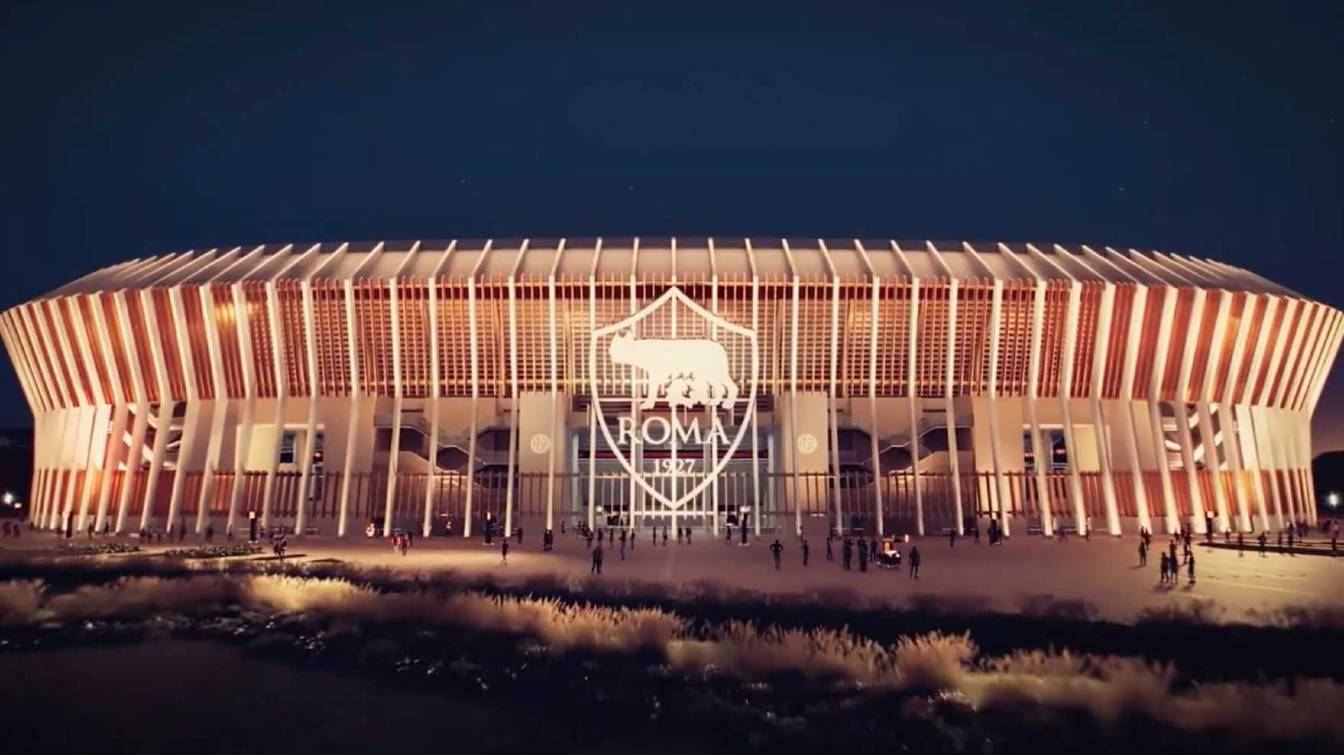 © AS Roma | Italian bureaucracy is exceptionally slow. The project for a new stadium for AS Roma (on the photo) has been blocked for several months by a dispute over whether there is a forest on the designated site or not.
© AS Roma | Italian bureaucracy is exceptionally slow. The project for a new stadium for AS Roma (on the photo) has been blocked for several months by a dispute over whether there is a forest on the designated site or not.
Phase 3: From the cornerstone to the last chair
All approvals in place? Contracts signed? Budget ready? All right then, here we go with the most important part: the actual construction.
| Start of work | Inauguration of works |
|---|---|
| Site preparation | |
| Preparation of the foundations | |
| Construction | Construction of the structure and stands |
| Facade construction and work on the interiors | |
| Roof construction and seats installment | |
| Installation of systems: drainage and ventilation. | |
| Finishing work | Installation of systems: audio, video, security, etc. |
| Interior finishing – painting, panelling, toilets etc. | |
| Turf installation |
Start of work
On the appointed date, the contractor will prepare the site in order to pull up the necessary utilities, prepare access routes, mark out parking spaces, set up worker barracks or bring in heavy equipment. Then we will be able to organise the ceremonial laying of the foundation stone. Of course, with the participation of guests: local authorities, financial partners, sponsors, the team, residents... the list could be long.
Immediately after the ceremony, groundworks should begin, followed - if fortunately no ancient objects or fossils are found during the works - by preparing the foundations for the future stadium.
Construction
Once the foundations are in place, the most spectacular moment will come: the construction of the structure of the stadium. Then the effects of the work will be visible even to passers-by every day, and the pace of progress will be widely commented on. Once this stage is over, the workmen will focus on the work inside the stands and the facade.
Once the façade is complete, it will be time to build the canopy (if we were planning one, but fortunately that's standard these days). After that, will come the setting up of the chairs on the stands - unless we're in a hurry, maybe before or at the same time - and the drainage and ventilation systems.
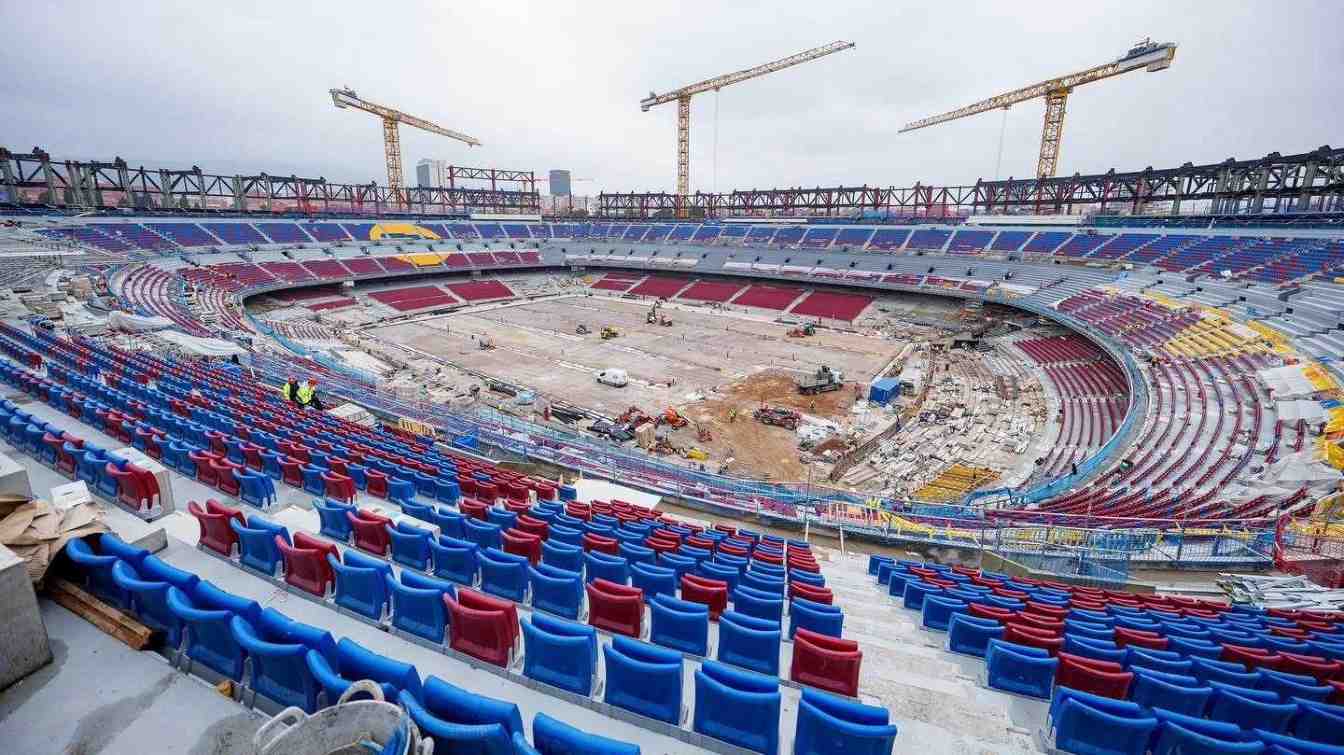 © FC Barcelona | To speed up the work at Camp Nou, the contractor set up the chairs before hanging the roof, but this will require an additional structure to protect them from damage.
© FC Barcelona | To speed up the work at Camp Nou, the contractor set up the chairs before hanging the roof, but this will require an additional structure to protect them from damage.
Finishing work
Once this work is at an advanced stage, the finishing touches can begin in the completed sectors of the stadium. This will include the installation and interconnection of the sound, video and security systems, but also the painting of the walls, the preparation of the toilets and the application of all the signposting - from the club's symbols to the logos of the sponsors and the names of the zones to the evacuation signs. This phase will be completed with the installation of the pitch.
Phase 4: The home stretch
Once everything on the stadium is ready (or so we think), our stadium will have to undergo a number of tests and inspections, which, however, will then be sweetened by the official, ceremonial inauguration.
| Official approval | Inspections: safety and health, fire protection and building inspection |
|---|---|
| Certification of compliance with league/national etc. standards | |
| Test events and inauguration | Test matches and events |
| Official opening of the stadium |
Official approval
Before we hold the first match in our new, just-completed stadium, it will have to pass several inspections: from the health and safety department, the fire brigade or the building inspection. We also need to be prepared for visits from representatives of the organisations to whose requirements we have adapted our project: federation, league or international bodies.
Testing and official inauguration
Once we have all the certificates and approvals in place, a few test events should be organised to ascertain whether we need to improve anything. This could be transport, publicity, signage or the availability of catering facilities. Such a test match, obviously with a limited audience, will allow shortcomings to be detected and remedied in time.
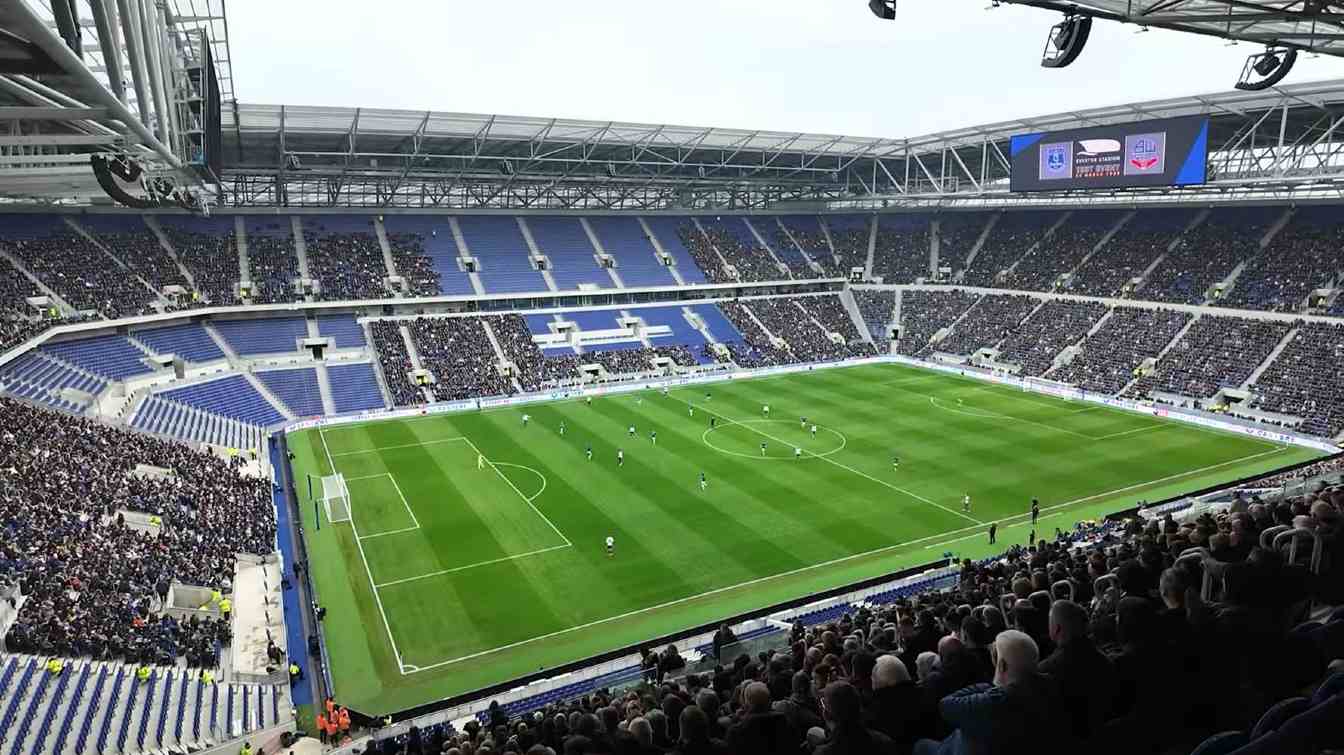 © Mister Drone UK | Prior to the opening of the Everton Stadium, the club organised two test matches which demonstrated the insufficient connectivity of the facility.
© Mister Drone UK | Prior to the opening of the Everton Stadium, the club organised two test matches which demonstrated the insufficient connectivity of the facility.
Once we have organised a few of these events and are confident that the facility is ready for the great inauguration, we will choose a date and organise the first match at the new stadium. It could be a league clash, but it could also be a friendly game. It is important that the setting is festive. It is advisable to organise concerts, attractions in the fan zone or competitions. Of course, you need to invite the authorities and important personalities, because, like the start of construction, the inauguration is an important occasion and the culmination of the joint efforts of many people and institutions.
And voilà, it's done! Now all that remains is to manage the facility wisely, modernise it once in a few years and ensure that the income is greater than the expenditure, which is not an easy task at all.
Advertisement

 StadiumDB
StadiumDB